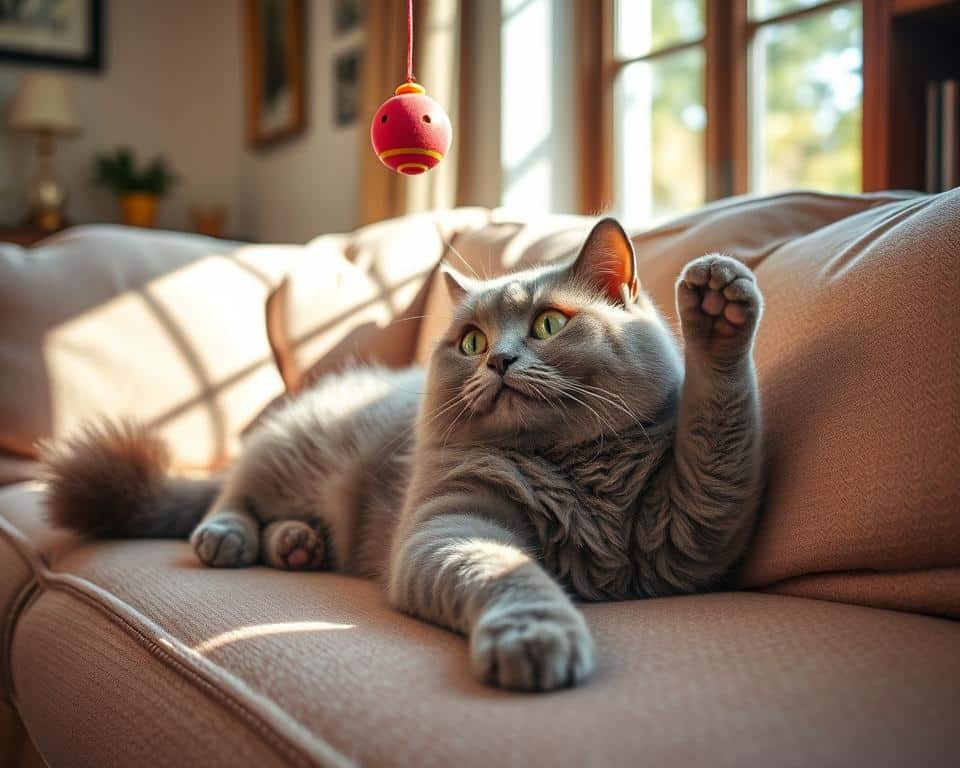Welcome to our guide on the world’s most beloved feline breed! They have round faces, plush coats, and calm temperaments. These traits have won the hearts of many pet lovers.
What sets this breed apart? Their “teddy bear” look is just the start. Their chubby cheeks, copper eyes, and sturdy bodies are hard to resist.
Our British Shorthair cat chart is your go-to for all things about these cats. It covers their coat colors, health, and daily care needs.
If you’re thinking of getting one or just love their unique characteristics, this guide has you covered. They’re great for families, singles, and seniors because of their easy-going nature.
Key Takeaways
- British Shorthairs are known for their distinctive round faces and plush, dense coats
- They typically have calm, easygoing temperaments that suit various household types
- These cats come in numerous coat colors and patterns beyond the classic blue-gray
- They’re generally healthy but have specific care considerations owners should know
- Their low-maintenance personality makes them excellent companions for busy families
- Understanding breed characteristics helps ensure a good match between cat and owner
The Rich History of British Shorthair Cats
The British Shorthair has a rich history that spans centuries. They started as working cats and have become beloved pets. Their journey shows how humans and animals have changed over time.
Ancient Origins and Development
The story of the British Shorthair begins in ancient Rome. They were brought to Britain by Roman legions to fight rodents. This was theearliest documented arrival of domestic catsto the British Isles.
These cats adapted to Britain’s climate over the centuries. They became strong and had thick coats to keep warm. They roamed farms, villages, and cities, becoming a common sight.
These cats were valued for their hunting skills. They had strong bodies and thick fur. Their looks were shaped by natural selection, not by humans.
Evolution into the Modern British Shorthair
In the late 19th century, cat fanciers noticed these unique cats. Harrison Weir showcased them at the first cat show in London in 1871.
World Wars nearly wiped out the breed due to food shortages. Breeders saved them by crossing with Persians. This added to their round faces and plush coats.
By the mid-20th century, the breed was back and recognized worldwide. Here are some key moments in their history:
| Time Period | Key Development | Impact on Breed | Physical Characteristics |
|---|---|---|---|
| 43 CE | Arrival with Roman legions | Introduction to British Isles | Original working cat appearance |
| Middle Ages | Natural development as street cats | Adaptation to British climate | Sturdy build, thicker coat |
| 1871 | First cat show appearance | Recognition as distinct type | Standardization begins |
| 1940s-1950s | Persian outcrossing | Breed preservation | Rounder face, denser coat |
| 1980s-Present | Global popularity growth | Breed refinement | Modern British Shorthair standard |
Today, the British Shorthair is a mix of their working cat past and careful breeding. They have gone from being mousers to cherished pets. Their story is a great example ofpreserving a natural breedwhile keeping their best qualities.
Physical Characteristics of British Shorthairs
The British Shorthair’s teddy bear-like look comes from its unique physical traits. They have a strong body and a sweet face that people love. Their mix of strength and roundness makes them instantly recognizable.
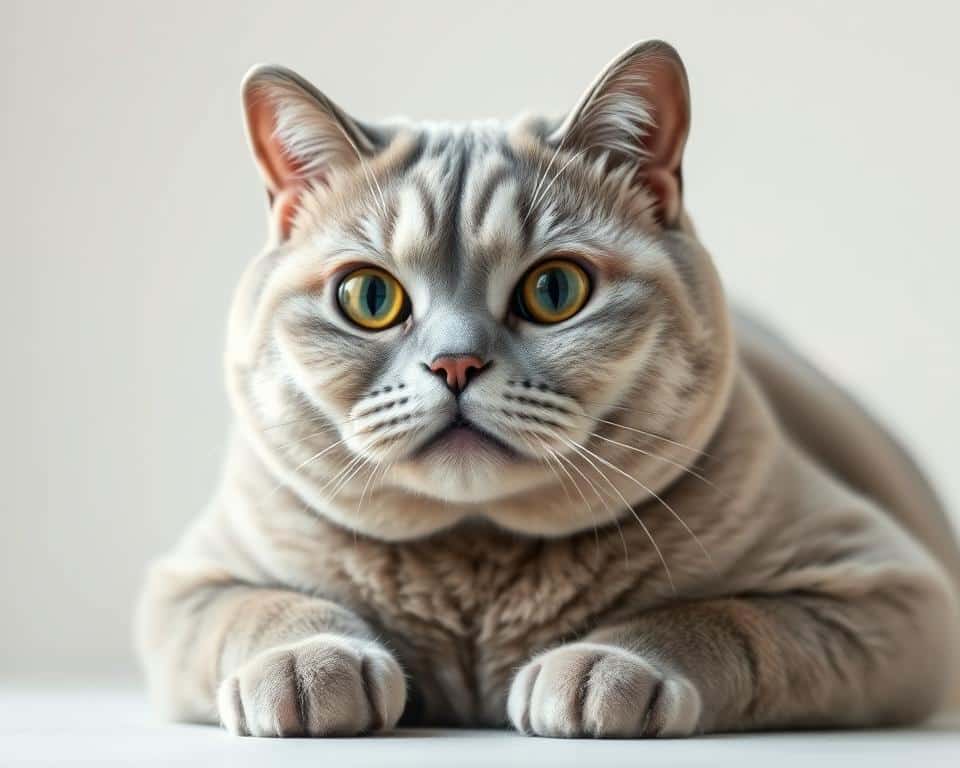
Size and Weight Chart
British Shorthairs are medium to large cats. They grow slowly, reaching full size by 3-5 years old. Males are usually heavier than females, making them look more substantial.
They grow slowly, filling out long after other cats stop. This is seen in their muscles and face.
| Age | Male Weight (kg) | Female Weight (kg) | Body Length (cm) | Height (cm) |
|---|---|---|---|---|
| 6 months | 2.5-3.5 | 2.0-3.0 | 25-30 | 20-23 |
| 1 year | 3.5-5.0 | 3.0-4.0 | 30-35 | 23-25 |
| 3 years | 5.0-7.0 | 4.0-5.5 | 35-40 | 25-28 |
| Fully mature | 5.0-8.0 | 4.0-6.0 | 35-45 | 25-30 |
Distinctive Body Structure
The British Shorthair’s body is cobby and muscular. They have a broad chest, strong shoulders, and a level back. Their legs are short but strong, supporting their weight well.
Their paws are round and firm, like small cushions. This fits their solid build. They move with a dignified gait, showing their strength and balance.
Their tail is medium length with a rounded tip. It adds to their gentle curves. Despite their size, they have an elegant look that’s unmistakably British Shorthair.
Facial Features and Expression
British Shorthairs have a unique face. Their heads are broad and rounded, loved by cat fans. Males have prominent “chipmunk” cheeks, making their face plump and cute.
Their eyes are large and round, often copper, gold, or blue. This shape and placement gives them a sweet, open expression. Their nose is short and straight, adding to their rounded face.
They have broad, rounded ears set wide apart. This fits their round head and adds to their alert yet gentle look. Their short but thick neck completes their teddy bear-like appearance.
The Comprehensive British Shorthair Cat Chart: Colors and Patterns
Exploring the British Shorthair breed reveals a wide range of colors and patterns. Their dense coats are perfect for showcasing many hues and markings. Let’s explore the world of British Shorthair colors and patterns, from the iconic blue to the rarest variations.
Solid Color Varieties
Solid-colored British Shorthairs have a uniform color across their coat. They show off the breed’s dense fur and round features in their purest form. The color goes from root to tip, creating a rich, vibrant look that highlights their plush texture.
Blue British Shorthairs
The blue British Shorthair is the most iconic and historically significant color variant. Their coats range from light silvery blue to deeper steel tones, always with that characteristic plush texture. They have bright copper or gold eyes that create a striking contrast against their coat. Their nose leather and paw pads match their fur in a complementary blue-gray shade.
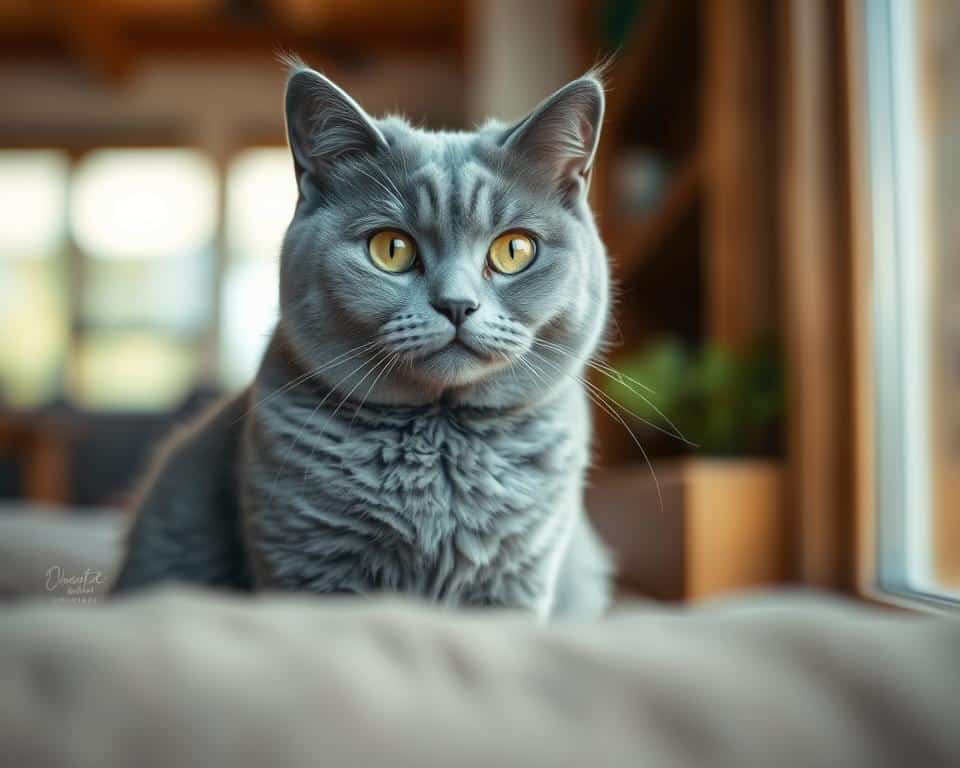
Beyond the classic blue, British Shorthairs come in many solid colors. The chocolate variant has a rich, warm brown coat paired with orange or copper eyes. Cream British Shorthairs have a soft, pale coat with pink nose leather and paw pads. The rare lilac coloration presents as a delicate lavender-gray with pink undertones.
Black British Shorthairs have jet-black fur without rusty highlights, while white specimens have snow-white coats often paired with striking blue or copper eyes. The cinnamon and fawn varieties are among the rarest and most sought-after colors in the breed.
Tabby Patterns
Tabby patterns are some of the oldest and most natural in domestic cats. In British Shorthairs, these patterns appear with exceptional clarity due to their dense, short coats. All tabbies share the characteristic “M” marking on their forehead, though their overall patterns vary significantly.
Classic, Mackerel, and Spotted Tabbies
Classic tabbies have bold, swirling patterns resembling a marble cake, with distinctive “butterfly” markings across their shoulders and “bullseye” patterns on their sides. Mackerel tabbies have narrow, parallel stripes running vertically down their bodies, resembling a fish skeleton. This pattern earned them the “mackerel” name. Spotted tabbies have distinct spots across their bodies instead of continuous stripes, creating a leopard-like appearance that varies in spot size and distribution.
Silver and Golden Tabbies
Silver tabbies combine tabby markings with a silver-white undercoat, creating dramatic contrast that makes their patterns pop. Their fur appears to shimmer in certain lights, adding to their appeal. Golden tabbies have rich, warm golden undercoats with darker tabby markings overlaid. These cats often have green or gold eyes that complement their metallic-looking fur, making them particularly striking specimens within the British Shorthair family.
Colorpoint and Other Variations
British Shorthairs also come in several complex color variations beyond solids and tabbies. Colorpoint British Shorthairs display darker colors on their extremities (face, ears, legs, and tail) with lighter bodies, similar to Siamese coloration. This pattern results from a temperature-sensitive gene that restricts color development to cooler body areas.
Bicolor cats have white with patches of another color, while tortoiseshell (or “tortie”) cats display a mottled pattern of two or more colors. Smoke variants have solid-colored fur with white undercoats, creating a dramatic effect when they move. These complex patterns add further diversity to the already impressive range of British Shorthair appearances.
| Color/Pattern | Description | Eye Color | Rarity |
|---|---|---|---|
| Blue | Medium blue-gray without markings | Copper or gold | Common |
| Chocolate | Rich brown from milk to dark chocolate | Orange or copper | Uncommon |
| Classic Tabby | Swirling patterns with butterfly markings | Copper, gold, or green | Common |
| Silver Tabby | Silver undercoat with dark tabby markings | Green or gold | Uncommon |
| Colorpoint | Light body with darker extremities | Blue | Rare |
Understanding British Shorthair Coat Genetics
Every British Shorthair’s coat is a result of amazing genetics. Their fur comes in many colors and patterns. Knowing about these genetics helps predict kitten looks and keeps bloodlines healthy.
Color Inheritance Patterns
British Shorthair coat colors follow certain patterns. The main color gene decides if a cat is black, chocolate, cinnamon, red, or a diluted version. Dilution genes make bold colors softer – like black turning blue (gray).
Sex-linked traits are key for some patterns. Tortoiseshell and calico patterns mostly show up in female cats. This is because they need two X chromosomes for these colors. Male tortoiseshells are very rare, happening only with genetic issues.
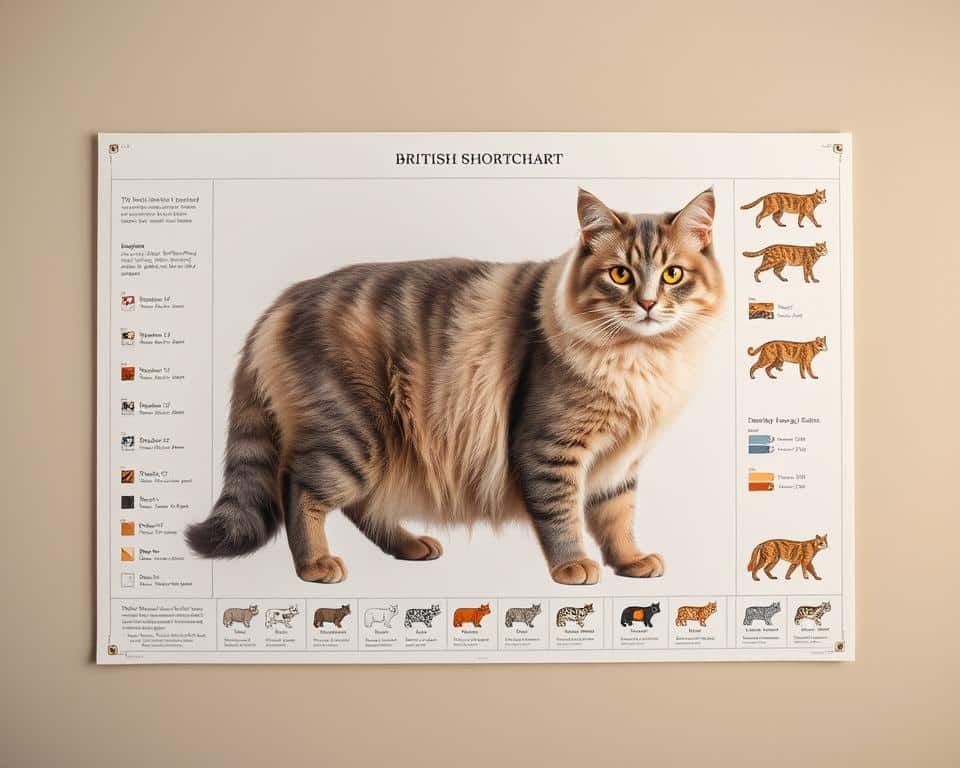
The classic blue British Shorthair is a diluted black. Breeders look at parents’ genes to guess a kitten’s color. Some traits might be hidden in parents.
Rare Color Combinations
While blue British Shorthairs are common, some colors are rare. Cinnamon and fawn cats need special genes. Smoke patterns make each hair look like it has a pale base with colored tips.
Tortie British Shorthairs have a complex color mix. They have tabby markings and solid color patches. Their orange, amber, or copper eyes add to their beauty. Tortoiseshell kittens start with a few spots that grow as they get older.
Silver and golden British Shorthairs are genetic wonders. Inhibitor genes stop pigment in certain parts of the hair. Colorpoint patterns happen when genes limit color to cooler body parts, like Siamese cats.
These rare colors amaze cat lovers. But, breeders focus on health and personality first. The beauty of these coats is worth keeping, but not at the cat’s expense.
Temperament and Personality Traits
British Shorthairs are known for their calm and dignified nature. They are great companions, balancing independence and affection well. This makes them fit into many different homes.
These cats are calm and not clingy or aloof. They offer steady companionship, which many find refreshing. Their moderate energy levels and patience make them perfect for busy lives.
Every British Shorthair is unique, but knowing their typical traits helps. This can tell you if they fit your lifestyle and expectations.
Behavioral Characteristics Chart
British Shorthairs have distinct traits that make them great companions. They are independent yet affectionate in a special way.
They show love by being near you, not by demanding attention. This can be seen as endearing once you understand it. It’s different from other breeds.
| Personality Trait | Rating (1-5) | Typical Expression | Notes for Owners |
|---|---|---|---|
| Independence | 4 | Self-sufficient, not clingy | Appreciates alone time; doesn’t require constant attention |
| Affection Level | 3 | Companionable but reserved | Shows love by being near you rather than on you |
| Activity Level | 2 | Moderate play sessions | Playful in short bursts; enjoys lounging |
| Vocalization | 2 | Quiet, occasional soft meows | Communicates needs without being demanding |
| Adaptability | 4 | Adjusts well to routine changes | Handles new situations with characteristic calm |
British Shorthairs are smart but not mischievous. They think before acting, showing their thoughtful side. Their play is dignified and not frantic.
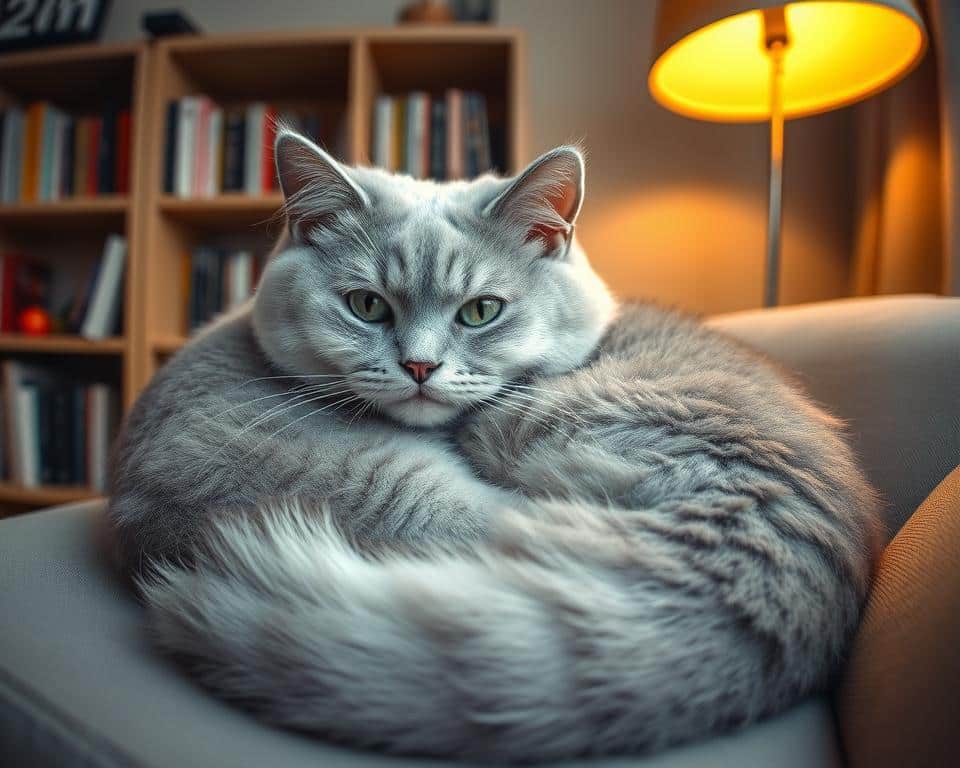
Compatibility with Families and Other Pets
British Shorthairs are excellent family companions. They are patient and calm, making them great for busy homes.
They are patient with children and don’t get upset easily. This makes them great for families with kids. Just remember to teach kids how to treat animals right.
My British Shorthair has been the perfect first cat for our family. He’s patient with the kids but knows how to set boundaries, and his calm demeanor brings a sense of peace to our otherwise chaotic household.
British Shorthairs get along well with other pets, especially if introduced right. They are not confrontational and respect personal space. But, they should be watched with small pets like birds or rodents.
These cats fit into many living situations, from big houses to apartments. They don’t need a lot of space to play but enjoy having places to relax. They also get along well with owners who work a lot or have families.
For first-time cat owners, British Shorthairs are a great choice. They are easy-going and don’t need too much attention. Experienced owners also enjoy their calm and affectionate nature.
Health Profile of British Shorthairs
The health profile of British Shorthairs shows they are generally sturdy. They live longer than many other purebreds. Knowing about potential health issues helps you care for them better and catch problems early.
Regular vet visits, a balanced diet, and enough exercise are key. These keep your British Shorthair healthy for a long time. Let’s look at the health concerns and how long they live.
Common Health Concerns
British Shorthairs are mostly healthy but have some genetic issues. Responsible breeding practices have lowered many health problems. Still, it’s good to know about these issues before getting a British Shorthair.
Hypertrophic Cardiomyopathy
Hypertrophic Cardiomyopathy (HCM) is a big concern for British Shorthairs. It makes the heart muscle thick, leading to heart failure if not treated. Symptoms include tiredness, hard breathing, and sudden collapse.
Good breeders test their cats for HCM with echocardiograms. Always ask for proof of testing when buying a kitten. Early detection is key for managing this disease.
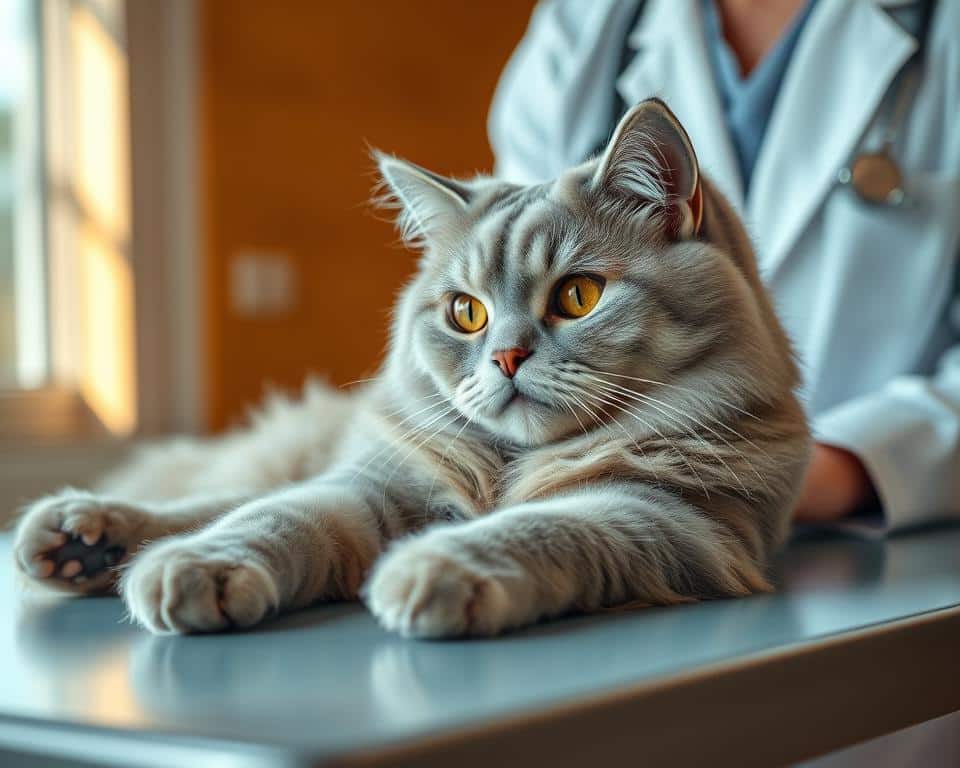
British Shorthairs may also face other health issues. Prospective owners should know about these:
- Hemophilia B – A blood clotting disorder that causes long bleeding after injuries or surgery
- Polycystic Kidney Disease (PKD) – A genetic condition that causes cysts in the kidneys, leading to kidney failure
- Obesity – They tend to gain weight easily, which can worsen other health problems
Genetic tests are available for some of these conditions. Responsible breeders test their cats before breeding. Regular vet care and keeping your cat at a healthy weight are important.
Lifespan and Aging Chart
British Shorthairs live a long time, usually between 12-16 years. Many live into their late teens with proper care. Knowing their life stages helps you care for them better as they age.
They grow in a predictable way, needing special care at each stage. Regular vet visits are crucial as they get older. Senior cats need bi-annual exams.
| Life Stage | Age Range | Key Developments | Care Recommendations | Veterinary Milestones |
|---|---|---|---|---|
| Kitten | 0-12 months | Rapid growth, socialization, playfulness | High-quality kitten food, frequent play sessions | Vaccinations, spay/neuter, microchipping |
| Young Adult | 1-6 years | Peak physical condition, full coat development | Adult maintenance diet, regular grooming | Annual check-ups, dental cleanings |
| Mature Adult | 7-10 years | Slight activity decrease, possible weight gain | Weight management, moderate exercise | Annual blood work, monitoring for HCM |
| Senior | 11-16+ years | Reduced activity, possible arthritis, coat changes | Senior-specific diet, adjusted environment | Bi-annual check-ups, thyroid screening |
As your British Shorthair ages, they may change in activity, weight, and grooming. Senior cats need easier access to litter boxes and food. Keeping a routine is important for older cats.
With the right care and vet visits, many health issues can be managed. This lets British Shorthairs enjoy their long lives with great quality of life.
Caring for Your British Shorthair
Learning how to care for your British Shorthair is key to their happiness. These cats have special needs that keep them healthy and happy. They are relatively easy to care for, but knowing their needs is important.
Grooming Requirements
British Shorthairs have a thick coat that’s easy to groom. They need weekly brushing to remove loose hair. In spring and fall, brush them twice a week to handle shedding.
Use a metal comb or slicker brush for their fur. Start grooming when they’re young. Short, positive sessions with treats make grooming a good experience.
Be careful with their undercoat to avoid mats. They rarely need baths, thanks to their clean nature. They usually take care of their grooming.
Nutrition and Feeding Chart
Good food is vital for British Shorthairs to avoid obesity. They do well on high-quality cat food with enough protein. Watch their portions to prevent weight gain.
Adjust food amounts based on their age, weight, and activity. Kittens need more food with more calories. Adult cats get two meals a day. Senior cats may need special food for their joints.
| Age | Weight (lbs) | Daily Portion (Dry Food) | Feeding Frequency | Special Considerations |
|---|---|---|---|---|
| 2-6 months | 3-6 | 1/3-1/2 cup | 3-4 times daily | Kitten formula recommended |
| 6-12 months | 6-10 | 1/2-3/4 cup | 2-3 times daily | Transition to adult food at 10-12 months |
| 1-7 years | 9-16 | 1/2-3/4 cup | 2 times daily | Monitor weight; adjust portions as needed |
| 8+ years | 9-16 | 1/3-2/3 cup | 2 times daily | Consider senior formula with joint support |
Exercise and Enrichment Needs
British Shorthairs need regular activity to stay healthy. They enjoy short, interactive play sessions. Play with them for 10-15 minutes a few times a day.
Try puzzle feeders and treat-dispensing toys. They love toys that mimic prey, like feather wands and motorized mice. These activities are fun and don’t tire them out.
These cats need things to do indoors. Give them cat trees, window perches, and toys to rotate. They like to watch from a distance and have a comfy spot near you.
British Shorthair Growth and Development Chart
British Shorthair cats grow slowly, taking up to five years to reach their full size. This is different from most domestic cats, which grow faster. Knowing the growth stages helps owners care for their cats better.
Kitten to Adult Milestones
The journey from kitten to adult British Shorthair is gradual. In the newborn to 8-week stage, kittens nurse and start to move. Their eyes open around 7-10 days, and they begin to explore.
From 2-6 months, kittens are very playful. They grow fast and learn important behaviors. Their faces start to look round, but they’re still leaner than adults.
The adolescent phase (6-12 months) sees big changes. Their coat gets thicker, and their personality grows. They become more independent but stay loving. Their muscles start to show, but they’re not yet fully grown.
Between 1-3 years, they become young adults. Their coat becomes plush, and their body gets stronger. By 3-5 years, they reach full maturity with solid muscles and a distinctive look.
Weight and Size Progression
| Age | Male Weight (kg) | Female Weight (kg) | Physical Characteristics |
|---|---|---|---|
| 8-12 weeks | 1.0-1.5 | 0.8-1.3 | Round head, proportional body |
| 6 months | 2.5-3.5 | 2.0-3.0 | Thickening coat, developing frame |
| 1 year | 4.0-5.5 | 3.5-4.5 | Adult features, continuing to fill out |
| 3-5 years | 5.0-8.0 | 4.0-6.0 | Full muscular development, dense coat |
British Shorthairs grow steadily, with males being heavier than females. This difference is clear from 6 months on. Proper food is key for their growth.
Feeding them the right food is important. Kittens need lots of nutrients, while adults need to watch their portions to avoid getting too fat.
Keep an eye on your cat’s growth with British Shorthair weight charts. Remember, every cat is different. Regular vet visits are crucial for their health.
Breeding British Shorthairs: What to Know
Breeding British Shorthairs is a mix of art and science. It requires ethical responsibility and genetic knowledge. These cats, known for their soft coats and friendly nature, need careful breeding to stay healthy and true to their breed.
Before starting, potential breeders must understand the big commitment. It takes time, knowledge, and money.
Ethical Breeding Practices
Good British Shorthair breeding puts the cats first. Ethical breeders check their cats’ health and do vet screenings. Queens should wait until they’re 1-2 years old to breed, to ensure they’re fully grown.
It’s important to limit a queen’s litters to 2-3 a year. This helps keep her healthy. Breeders should also give good care before and after birth, including food and vet checks.
Responsible breeders focus on the cats’ health, temperament, and breed standards. They don’t just look for rare colors or make money. They also make sure kittens are socialized, vaccinated, and ready for their new homes by 12-16 weeks.
Genetic Considerations and Testing
Cat genetic testing is key for good breeding. British Shorthairs need tests for HCM, PKD, and hemophilia B. These tests help find carriers of these diseases.
Good breeders keep detailed records of genetic tests. They choose between breeding related cats (line-breeding) or unrelated cats (outcrossing) to improve the breed. They aim to strengthen the breed and avoid genetic problems.
Keeping the breed diverse is crucial for health. Ethical cat breeding avoids too much inbreeding. Breeders share genetic lines with others to keep the breed healthy. Most pet British Shorthairs should be spayed or neutered, unless they’re part of a planned breeding program.
Showing British Shorthairs: Standards and Categories
British Shorthairs are a hit at cat shows worldwide. These events let breeders and owners show off their cats’ beauty. They also help keep the breed quality high and promote good breeding.
Cat Show Classification Chart
Knowing how British Shorthairs are judged in shows is key. Each cat registry has its own rules and categories. The color classification system is especially important for British Shorthairs. Their many coat colors and patterns affect their competition.
| Cat Association | British Shorthair Classes | Color Divisions | Age Categories | Championship Progression |
|---|---|---|---|---|
| CFA (Cat Fanciers’ Association) | Championship, Premiership, Kitten, Veteran | Solid, Tabby, Parti-color, Bi-color | Kitten (4-8 months), Adult (8+ months) | Champion → Grand Champion → National Winner |
| TICA (The International Cat Association) | Championship, Alter, Kitten, Household Pet | Solid, Tabby, Silver/Smoke, Parti-color | Kitten (4-8 months), Adult (8+ months) | Champion → Double Champion → Supreme Grand Champion |
| GCCF (UK) | Breed Class, Grand Class, Imperial Class | Self, Tabby, Colorpoint, Bi-color | Kitten (14-27 weeks), Adult (27+ weeks) | Champion → Grand Champion → Imperial Grand Champion |
Judges look at many things when evaluating British Shorthairs. They check the head shape, eye color, coat texture, and body structure. The cat needs a round face, dense coat, and sturdy body to do well.
Preparing Your British Shorthair for Shows
Getting ready for a show takes weeks. The grooming regimen for British Shorthairs makes their coat look great. They should be bathed 2-3 days before the show to show off their coat’s density.
Brushing daily with a steel comb keeps the coat looking good. It also removes loose hair and stimulates oils. Before the show, trim nails, clean ears, and wipe eyes gently.
Training your British Shorthair to accept handling is key. Practice poses that judges will use. Use treats to make these experiences positive.
When going to shows, keep your cat’s routine as normal as possible. Bring familiar items to reduce stress. Arrive early to let your cat get used to the show environment. A calm cat will do better than a stressed one.
Choosing a Healthy British Shorthair
Getting a British Shorthair kitten starts with picking a healthy one from a good source. Choosing wisely means you’ll have a happy, healthy pet. It also helps ethical breeding, which is good for the breed as a whole. Researching before buying a British Shorthair kitten can prevent future problems and vet bills.
Breeder Selection Guidelines
First, find reputable cat breeders. Look for those who let you visit and talk about their breeding. Good breeders raise kittens at home, don’t overbreed, and focus on a few breeds.
Ask about health tests on their breeding cats. Ethical breeders test for HCM and other genetic issues. They should also give health guarantees and vaccination records.
Watch out for red flags like breeders always having kittens ready or asking too much money for rare colors. A good breeder will ask you lots of questions, showing they care about their kittens’ homes.
Health Screening Checklist
When checking kittens, look at their overall health and behavior. A healthy kitten has bright, clear eyes and a clean nose. Their ears should be clean, and their coat should be thick and shiny.
See how the kitten moves. They should walk normally and seem happy. A healthy kitten is curious and playful, but British Shorthairs can be more reserved. Make sure they use the litter box and eat well.
Ask for all health records, including vaccinations and deworming. Get a vet check within 48 hours of bringing your kitten home. This early vet visit can catch any hidden issues and set a health baseline for your cat.
Conclusion: The Enduring Appeal of British Shorthairs
The British Shorthair is a top cat breed, loved for generations. Their cute teddy bear look, with a round face and soft coat, is instantly loved by many. This makes them stand out among other pets.
These cats are special because they balance being independent and loving. They enjoy spending time with you but also value their alone time. This makes them great for many types of homes, from busy families to singles.
They are also healthy and can live up to 20 years. This is thanks to careful breeding that keeps their unique traits. This makes them even more appealing as pets.
British Shorthairs are popular because they offer more than just looks. Their beautiful coats and eyes are eye-catching. But it’s their kind and steady nature that truly wins hearts.
If you’re thinking of getting a British Shorthair, you’re in for a treat. With the right care, they’ll bring years of love, loyalty, and that famous “Cheshire Cat” smile. They’ve been charming cat lovers for centuries.

